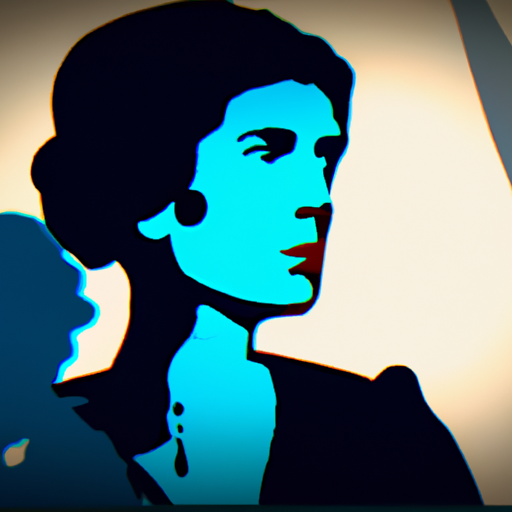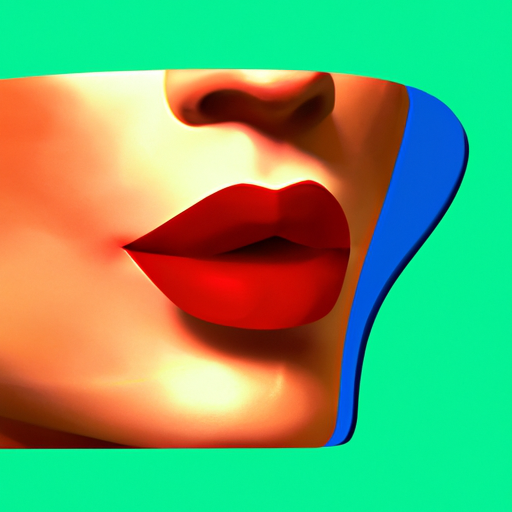
-
Table of Contents
- Curves and Elegance: Art Nouveau’s Design Impact
- Introduction
- The Origins of Art Nouveau
- Key Characteristics of Art Nouveau
- Art Nouveau in Architecture
- Hector Guimard’s Paris Metro Entrances
- Antoni Gaudí’s Sagrada Família
- Art Nouveau in Furniture and Decorative Arts
- Émile Gallé’s Glassware
- Charles Rennie Mackintosh’s Furniture
- Art Nouveau in Graphic Design
- Alphonse Mucha’s Posters
- Aubrey Beardsley’s Illustrations
- The Lasting Influence of Art Nouveau
- Art Nouveau Revivals
- Conclusion
Curves and Elegance: Art Nouveau’s Design Impact

Introduction
Art Nouveau, a decorative art movement that emerged in the late 19th century, had a profound impact on design and aesthetics. With its emphasis on organic forms, intricate details, and flowing lines, Art Nouveau brought a new sense of elegance and beauty to various art forms, including architecture, furniture, jewelry, and graphic design. This article explores the design impact of Art Nouveau, highlighting its key characteristics, notable examples, and lasting influence.
The Origins of Art Nouveau
Art Nouveau originated in the late 19th century as a reaction against the industrialization and mass production that characterized the era. It sought to break away from the rigid and symmetrical designs of the past and embrace a more natural and fluid aesthetic. The movement drew inspiration from various sources, including the curvilinear forms of plants and flowers, Japanese art, and the Gothic revival.
Key Characteristics of Art Nouveau
- Curvilinear forms: Art Nouveau is characterized by its use of flowing, organic lines that mimic the shapes found in nature. These curves can be seen in the sinuous lines of furniture, the intricate patterns of stained glass windows, and the elaborate motifs of posters and advertisements.
- Nature-inspired motifs: Art Nouveau often incorporated motifs from the natural world, such as flowers, leaves, and insects. These motifs were stylized and abstracted, creating a sense of harmony and beauty.
- Asymmetry: Unlike the symmetrical designs of the past, Art Nouveau embraced asymmetry, creating a sense of movement and dynamism. This can be seen in the asymmetrical facades of buildings and the asymmetrical placement of decorative elements.
- Integration of art and craft: Art Nouveau sought to blur the boundaries between fine art and applied arts. It emphasized the importance of craftsmanship and the integration of art into everyday objects, such as furniture, ceramics, and jewelry.
Art Nouveau in Architecture
One of the most significant areas where Art Nouveau made its mark was in architecture. Architects embraced the movement’s emphasis on organic forms and incorporated it into their designs. Notable examples of Art Nouveau architecture include:
Hector Guimard’s Paris Metro Entrances
Hector Guimard, a French architect, is known for his iconic Art Nouveau entrances to the Paris Metro. These entrances feature intricate ironwork with flowing lines and organic motifs. They became symbols of the Art Nouveau movement and are still admired today for their elegance and beauty.
Antoni Gaudí’s Sagrada Família
Antoni Gaudí, a Spanish architect, is often associated with the Art Nouveau movement. His masterpiece, the Sagrada Família in Barcelona, showcases the movement’s emphasis on organic forms and intricate details. The cathedral’s facades are adorned with sculptures and motifs inspired by nature, creating a harmonious and awe-inspiring design.
Art Nouveau in Furniture and Decorative Arts
Art Nouveau also had a significant impact on furniture and decorative arts. Designers embraced the movement’s flowing lines and nature-inspired motifs, creating pieces that were both functional and aesthetically pleasing. Notable examples include:
Émile Gallé’s Glassware
Émile Gallé, a French glass artist, was renowned for his Art Nouveau glassware. His pieces often featured intricate floral motifs and delicate colors. Gallé’s glassware exemplified the movement’s emphasis on craftsmanship and the integration of art into everyday objects.
Charles Rennie Mackintosh’s Furniture
Charles Rennie Mackintosh, a Scottish architect and designer, incorporated Art Nouveau elements into his furniture designs. His chairs and cabinets featured elegant curves and stylized floral motifs. Mackintosh’s furniture showcased the movement’s emphasis on both form and function.
Art Nouveau in Graphic Design
Art Nouveau had a significant influence on graphic design, particularly in the realm of posters and advertisements. Designers embraced the movement’s flowing lines and intricate details, creating visually striking and captivating designs. Notable examples include:
Alphonse Mucha’s Posters
Alphonse Mucha, a Czech artist, is known for his iconic Art Nouveau posters. His posters often featured elegant women surrounded by intricate floral motifs. Mucha’s designs captured the essence of the Art Nouveau movement and became synonymous with its aesthetic.
Aubrey Beardsley’s Illustrations
Aubrey Beardsley, an English illustrator, incorporated Art Nouveau elements into his illustrations. His black and white drawings featured intricate lines and stylized figures. Beardsley’s illustrations pushed the boundaries of the movement, embracing its dark and decadent side.
The Lasting Influence of Art Nouveau
Although the Art Nouveau movement was relatively short-lived, its impact can still be felt today. The movement’s emphasis on organic forms, intricate details, and flowing lines paved the way for future design movements, such as Art Deco and the organic architecture of the 20th century. Art Nouveau also influenced the development of modern graphic design, with its emphasis on visually striking and captivating designs.
Art Nouveau Revivals
In recent years, there has been a resurgence of interest in Art Nouveau. Designers and artists have been inspired by the movement’s elegance and beauty, incorporating its elements into contemporary designs. This revival showcases the enduring appeal of Art Nouveau and its timeless design principles.
Conclusion
Art Nouveau’s design impact cannot be overstated. With its emphasis on curves, elegance, and nature-inspired motifs, the movement brought a new sense of beauty and harmony to various art forms. From architecture to furniture to graphic design, Art Nouveau left an indelible mark on the world of design. Its influence can still be seen today, reminding us of the enduring power of its aesthetic.
